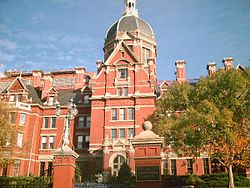It was only as a medical student at Johns Hopkins that I became aware that the private practice of medicine—any specialty, thoracic surgery in my case—was a possible career choice. By far the greater number of physicians at that time and now are in private practice. There have been changes in the private sector—whereas most in days gone by were either in solo or freestanding group practices, now many are hospital employees. The alternative to private practice was and is to join the faculty of a medical school; follow what is termed an “academic” path. I fear some will see this designation as a feeble attempt to be somewhat denigrating of the private practice arena. Most definitely not meant to be.
Being a member of the full-time faculty of a medical school simply means the surgeon spends some time dedicated to teaching and mentoring medical students and surgery residents and contributes new information that helps to advance the field. This latter process takes place through presentations at meetings of surgical societies and publication of articles in medical journals based on either laboratory research, clinical trials or accrued clinical experiences.
So, choosing a pathway, private practice or academia, is realizing the lifestyle that suits one’s personality and provides the most “job satisfaction.” Surgeons in academia generally have robust surgical practices but do need to carve out some time for the other mentioned activities. The trade-off for them is to operate and provide patient care less frequently than their counterparts in private practice but have these other spheres of activity to fill their time. I was drawn to academia for the variety of activities it brought, the satisfaction of spending time teaching and interacting with bright students and residents, and the interaction with my peers to attempt to advance the field of thoracic surgery.


